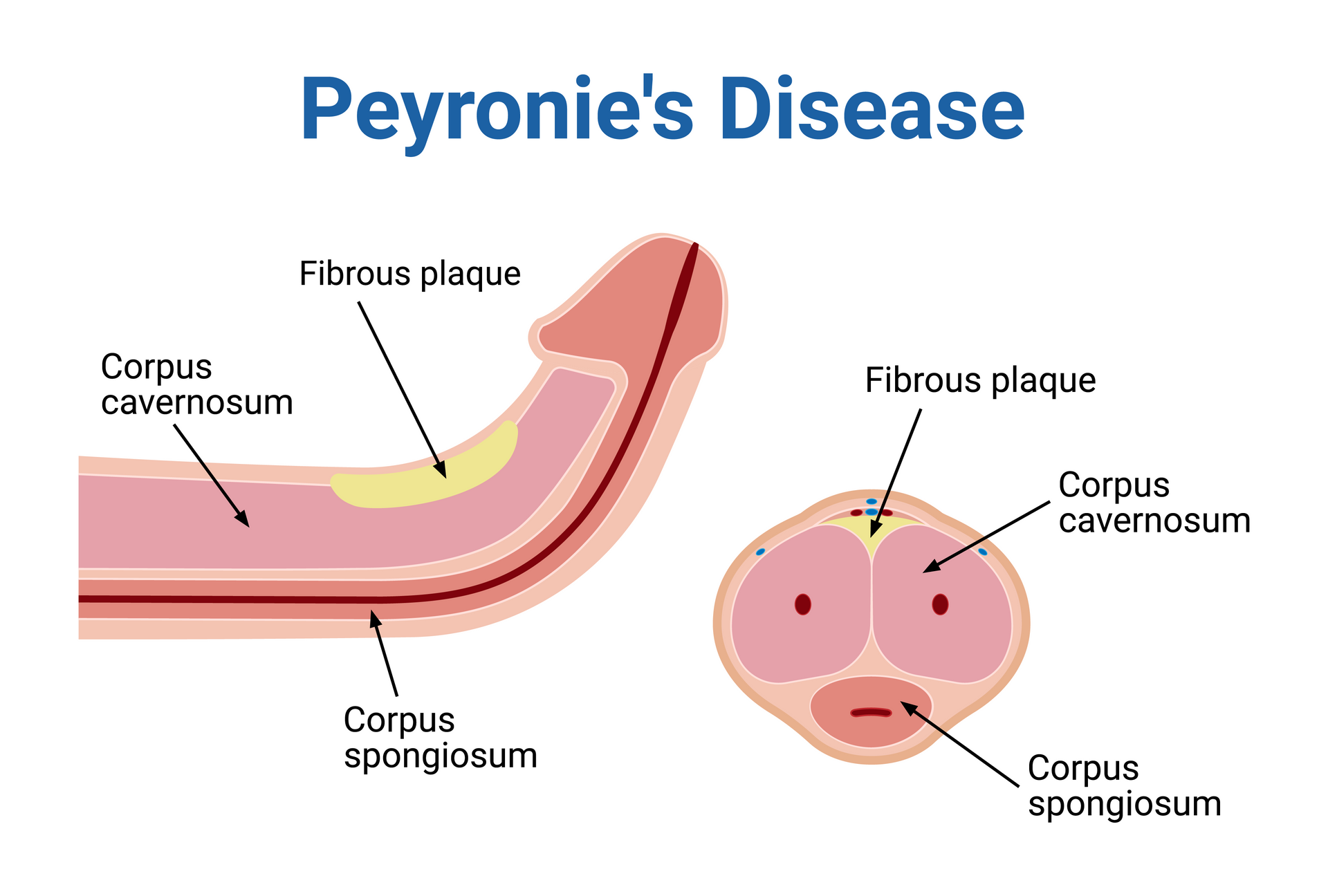Peyronie's Disease
Penile Curvature
Research shows a prevalence of Peyronie’s disease close to 8%, with 1 in every 11 men suffering from the condition.
Peyronie's disease is diagnosed with a thorough medical and sexual history and physical exam. When it comes to Peyronie's curves, each case is unique and requires a tailored approach to treatment. The degree of curvature, presence or absence of a palpable scar tissue, calcifications, and other abnormalities all need to be taken into account. Poor erectile quality past the point of curvature also needs to be assessed. There are two diagnostic tests that can help assess the anatomy of a man's curve: an in-office intracavernosal injection test and a penile duplex ultrasound. These tests provide accurate information about curvature anatomy and blood flow to and from the penis, which are crucial factors in determining the appropriate treatment plan.
Treatment options include non-surgical and surgical methods.
Non-surgical treatment includes oral and injectable medications, such as Xiaflex (collagenase clostridium histolyticum) and Verapamil, which can be used in combination with penile modeling and/or traction therapy. Penile traction therapy (penile modeling) involves the patient performing stretching exercises of the penis and is often recommended to help preserve length post-operatively following surgery. A Vacuum Erection Device and the RestoreX Device may be recommended as part of traction therapy. Surgery is considered the standard of care for Peyronie’s Disease and is recommended when the curvature has remained stable for at least 3 to 6 months. Plication (suturing) and penile implant are surgical procedures used to straighten the penis. Plication is usually reserved for patients with good erectile function and adequate penile length, while the penile implant is a good option for patients with both Peyronie’s disease and erectile dysfunction.


